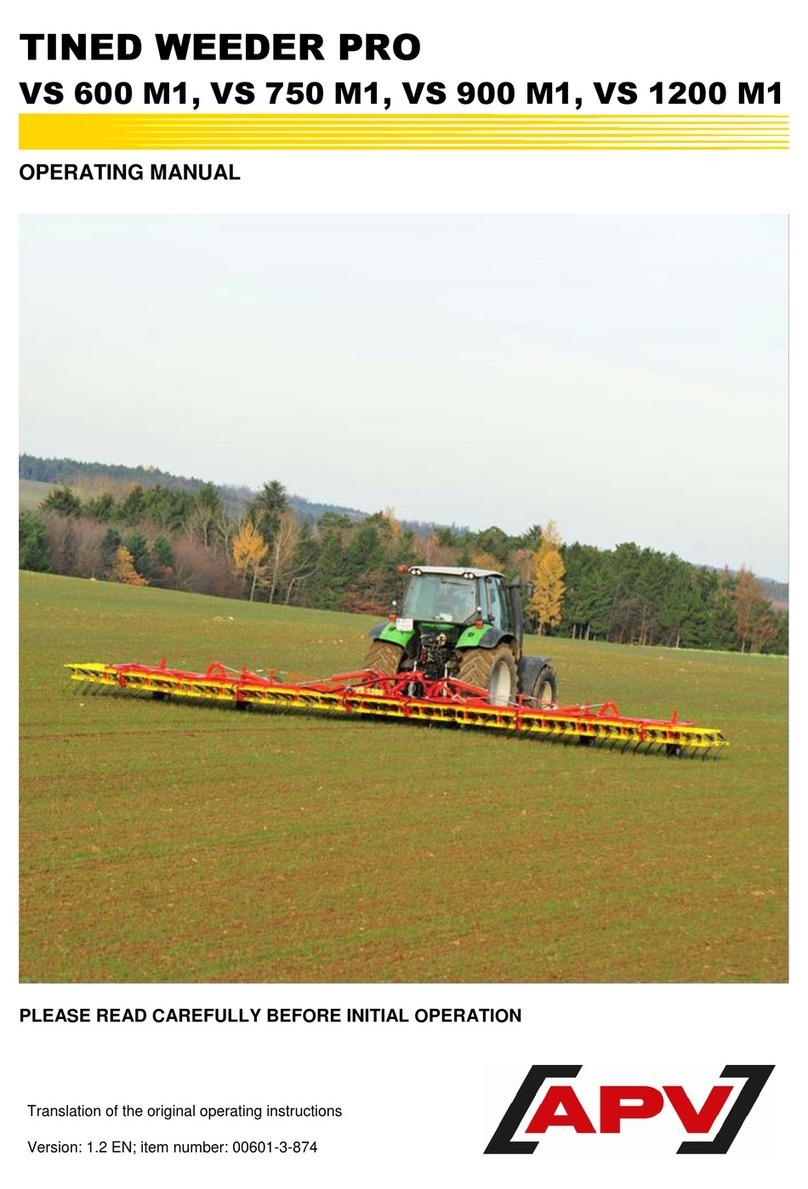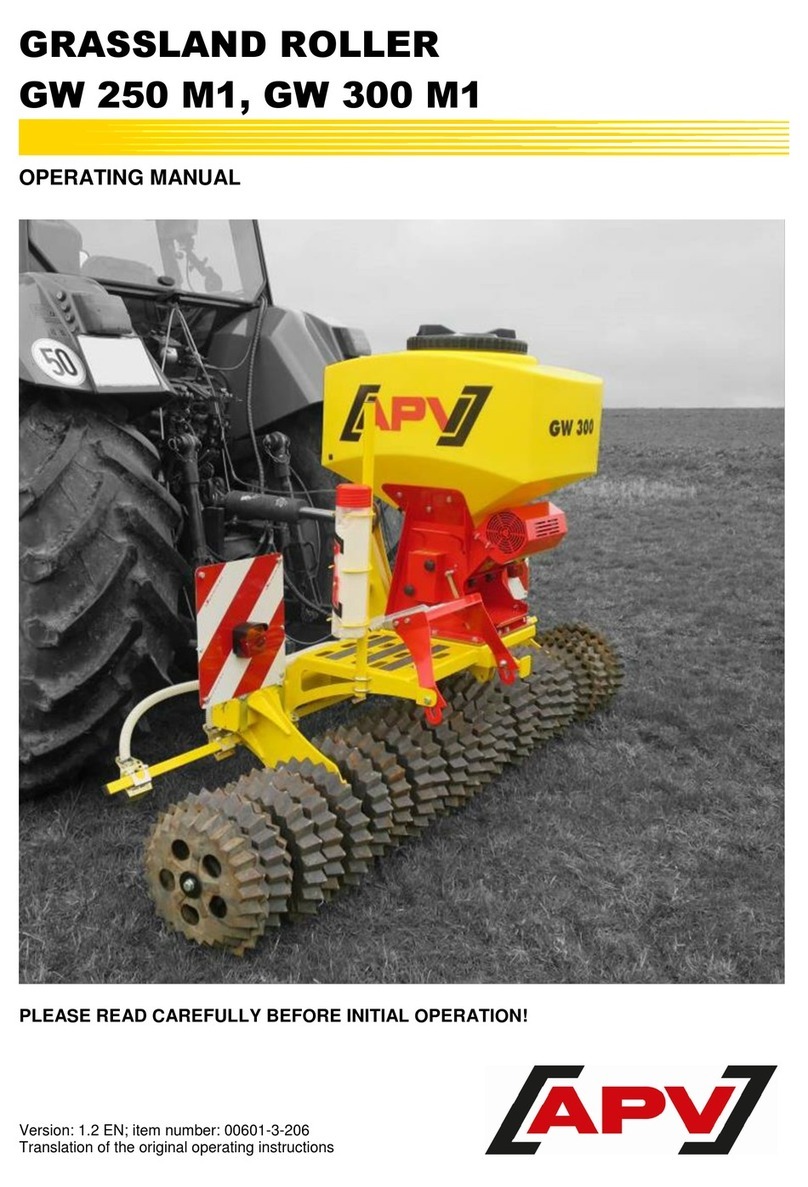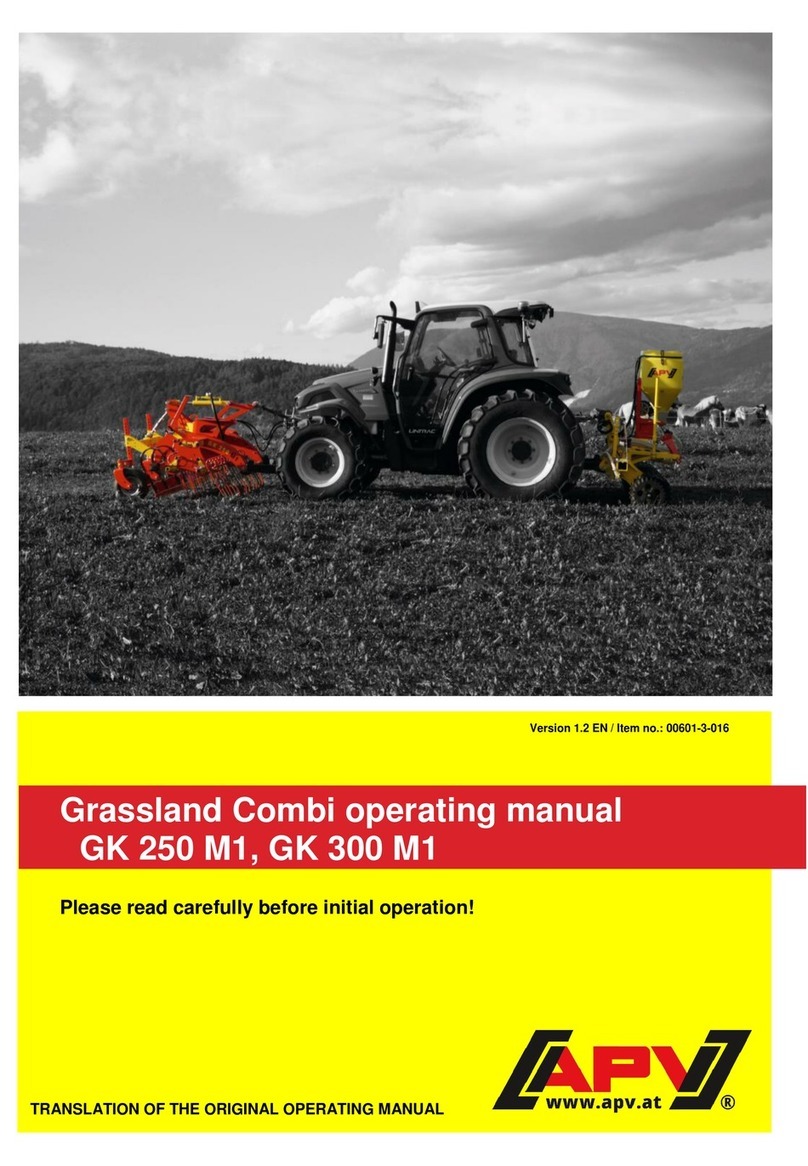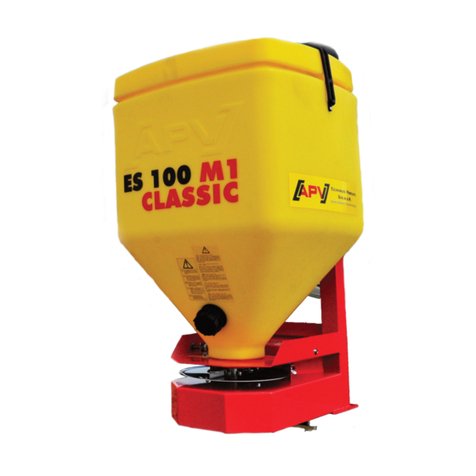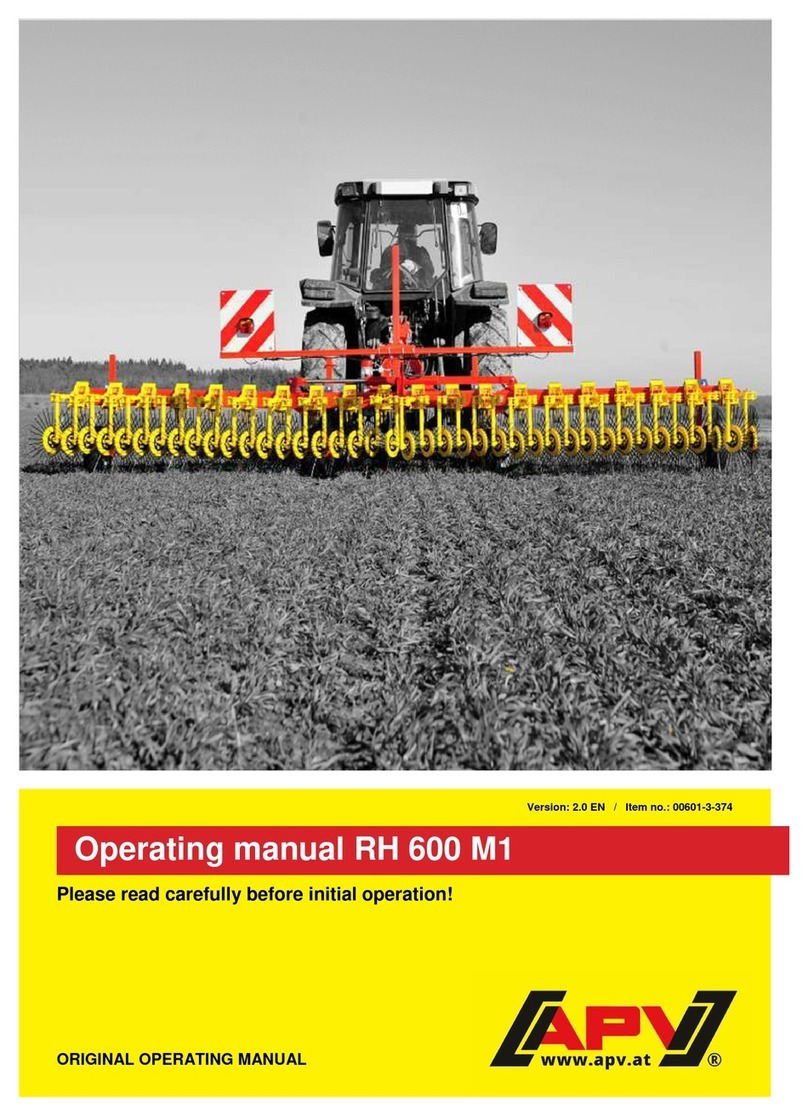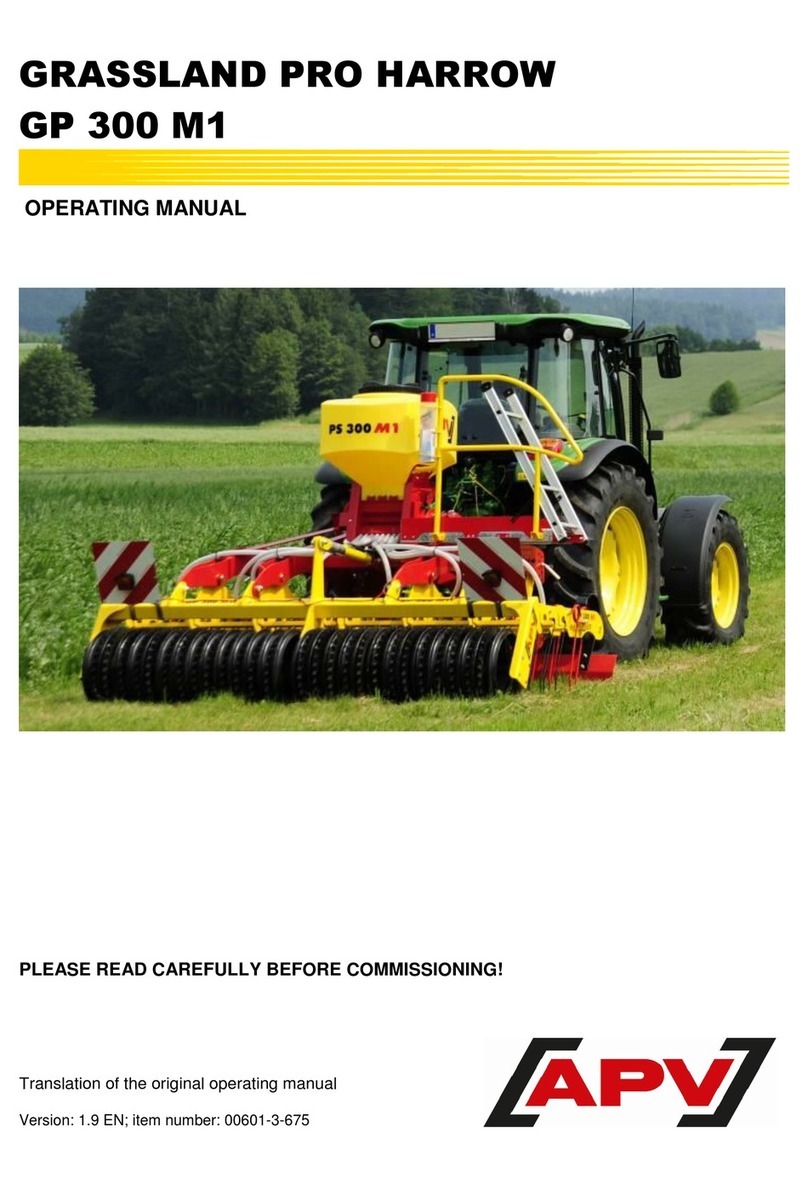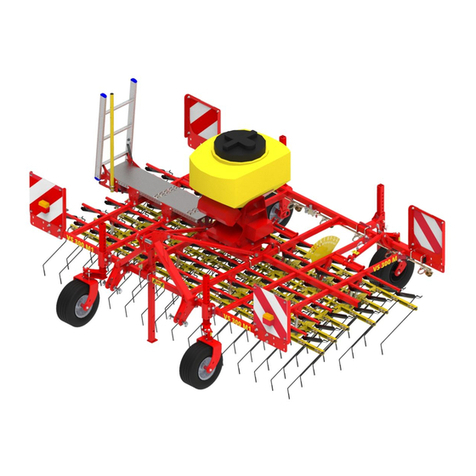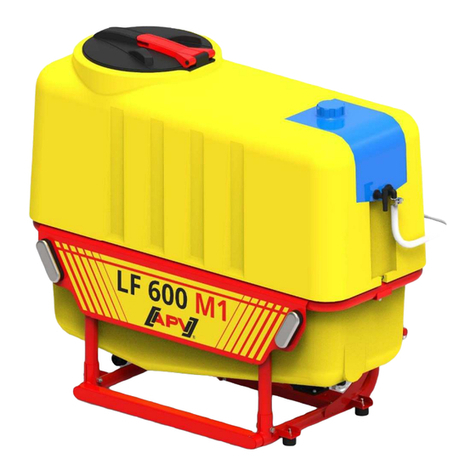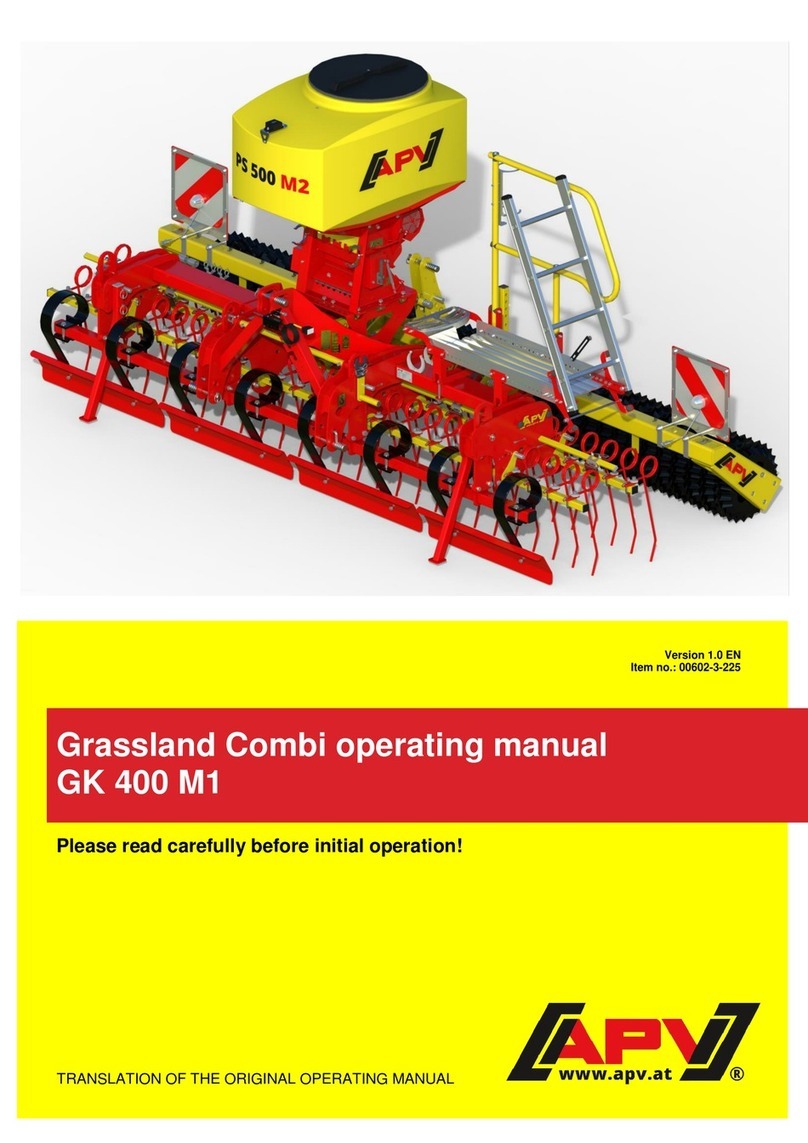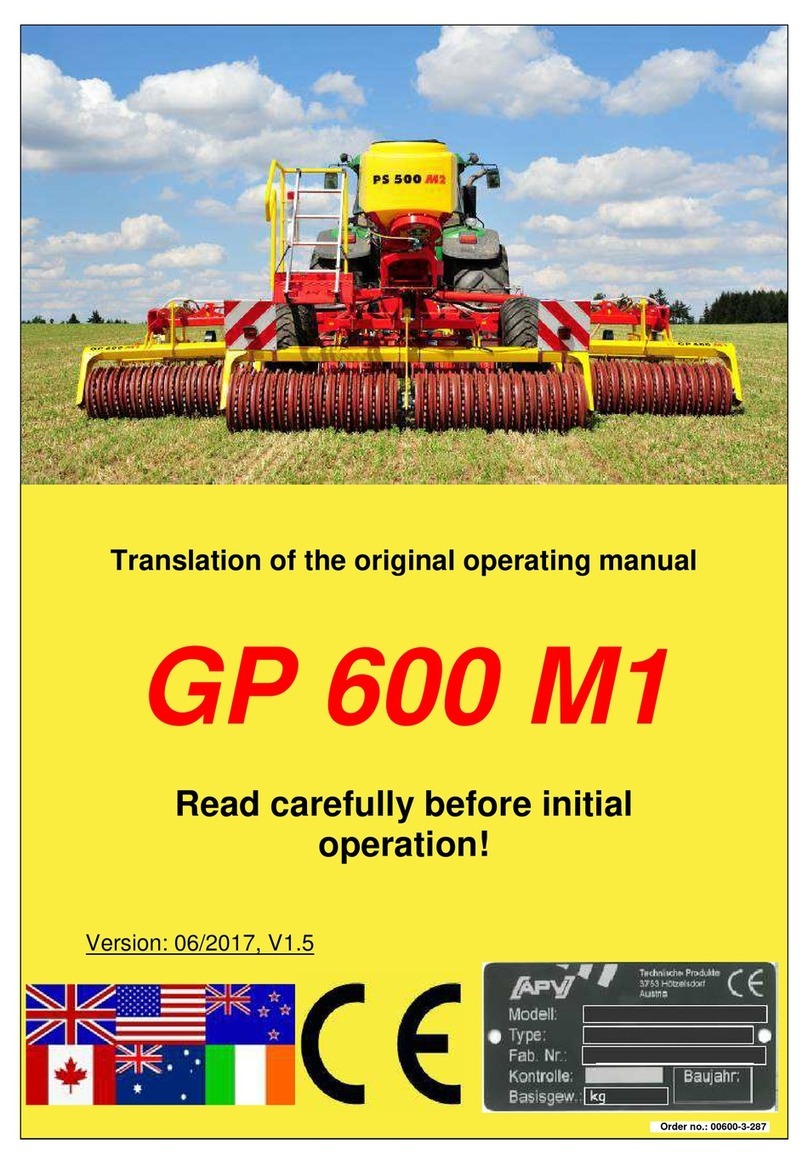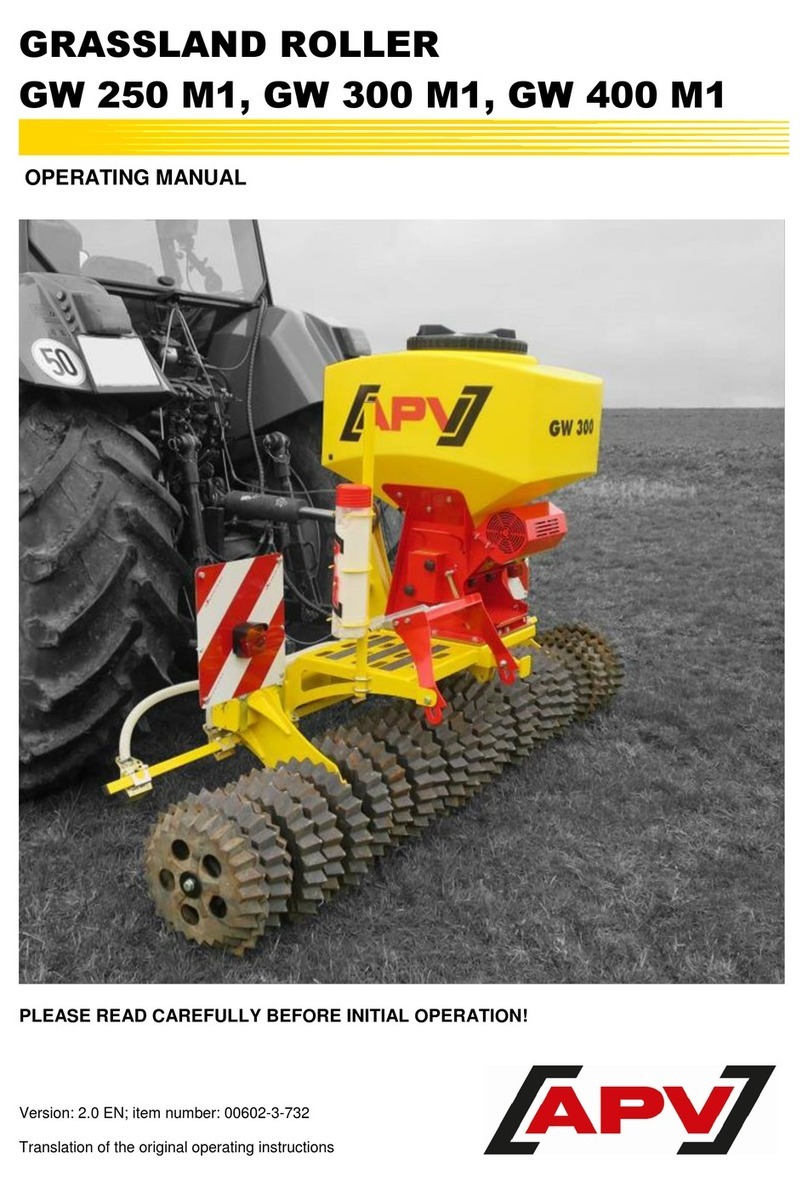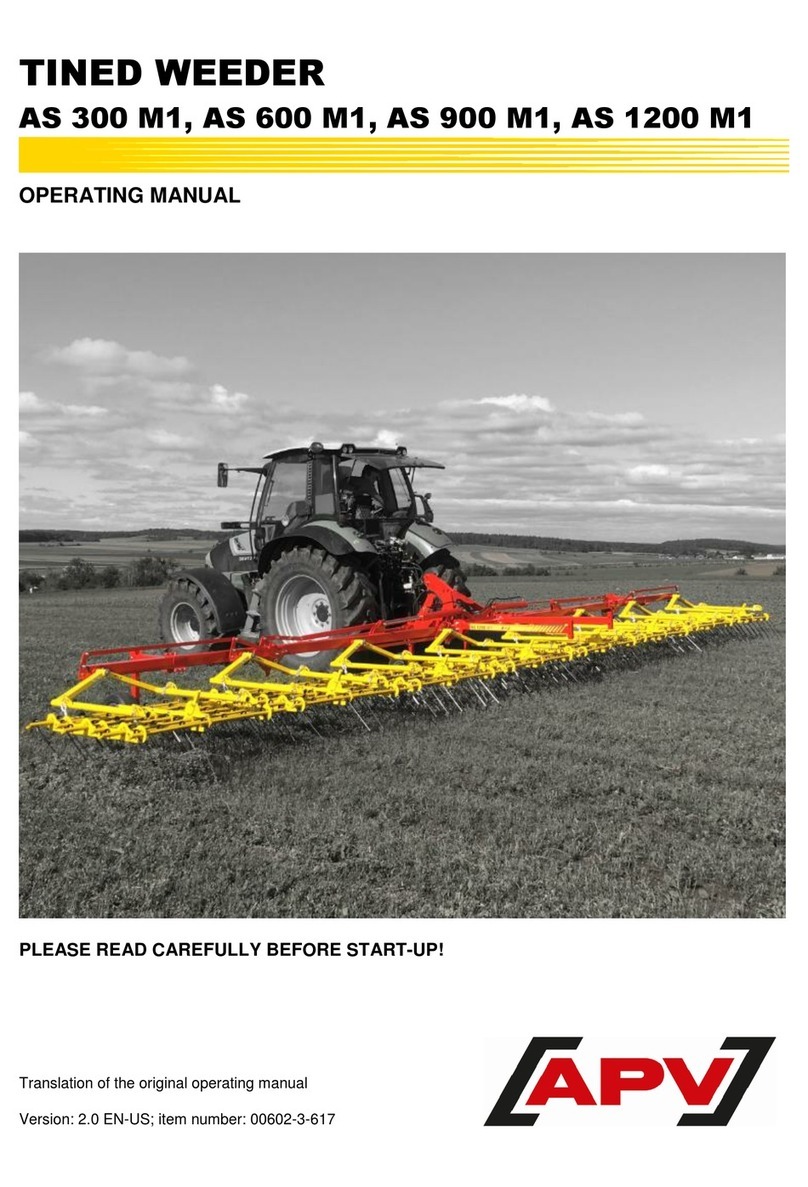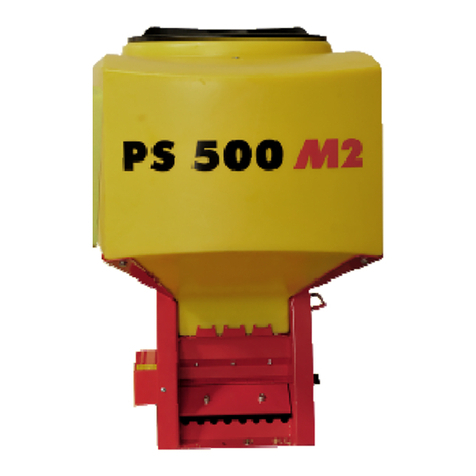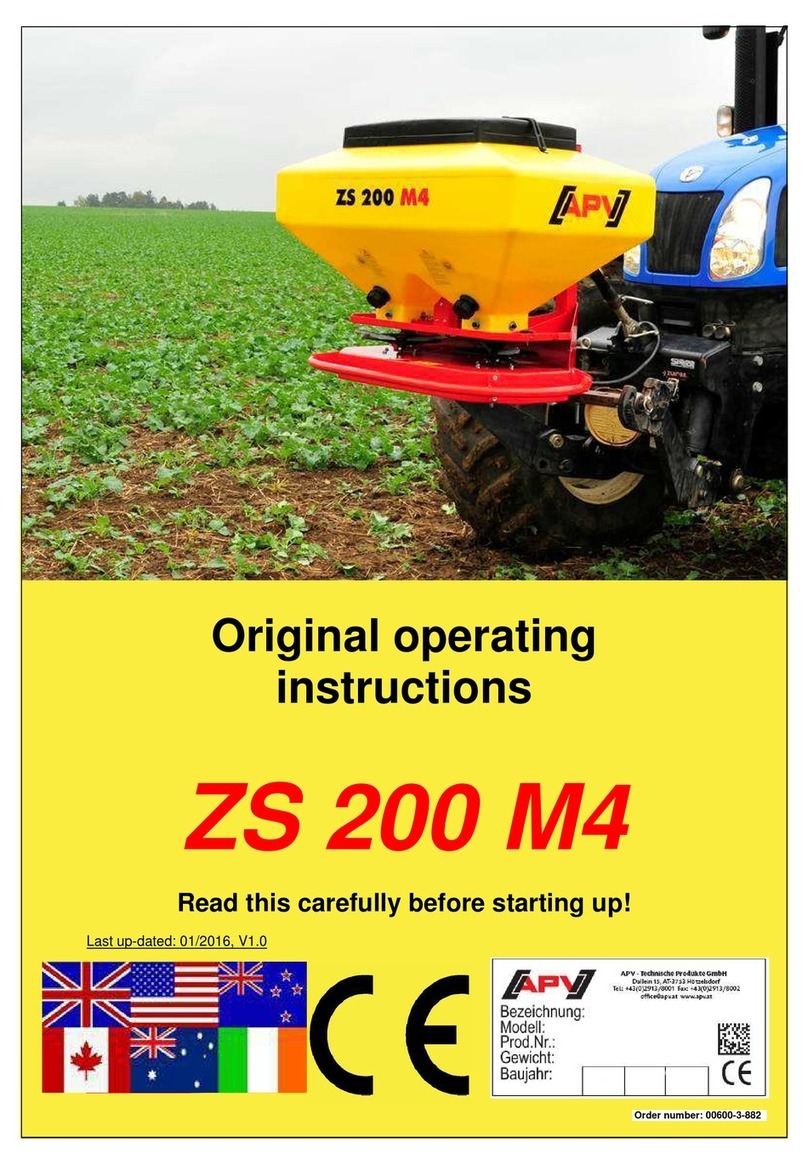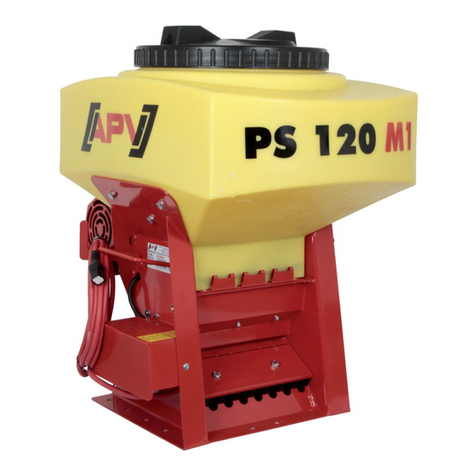
8
6.2 GENERAL SAFETY-RELATED INSTRUCTIONS AND ACCIDENT
PREVENTION REGULATIONS
The warning and information signs applied to the implement provide important instructions for safe
operation. These may not be removed in any case, observe them for the sake of your own safety!
There are pinch and shear points on externally powered (e.g. hydraulic) parts!
People must not becarried on the implementduring intended useon agricultural land andwhen driving
on roads.
Triggers for fast couplers must be hanging loosely and must not trigger themselves when lowered.
Observe the generally applicable safety and accident prevention regulations for the respective
country!
Transport of the implement on public roads requires compliance with the respective national licensing
regulations and road traffic regulations.
When implement parts are moving (e.g. during the folding or pre-tensioning procedure) it must be
ensured that there is no one standing in the danger zone of the implement –there is a risk of crushing.
When using the platform kit, it must be ensured that the implement is at a standstill, is unfolded, and
lowered onto the ground.
When mounting on the towing vehicle, the operator must ensure that the requirements for the tractor
in terms of the power, total weight, transport dimensions, axle loads and weight distribution as
specified in the operating manual are met and that the connections specified in the operating made
are correctly established.
When driving through low or narrow obstacles (e.g. power lines, underpasses, etc.), attention must be
paid to the height and width of the implement to avoid collisions.
When driving on public roads, which is only permitted with the chassis extended (both wheels) and
with the side wings folded as well as the roller retracted (hydraulic cylinder for roller adjustment is
completely retracted), the control block on the chassis cylinder prevents lowering of the Grassland
Pro Harrow as well as of the folded up components (additionally secured with catch hooks), also in
case of failure of the tractor hydraulic system.
When driving in curves, take account of the wide radius and/or the centrifugal mass of the implement!
Pay attention to the minimum turning curve!
Additional lighting (e.g., flashlight) should be used for repair or maintenance work if necessary.
For implements that are driven rapidly with soil-driven tools: Danger after lifting due to the still rotating
centrifugal mass! Only approach the implement when it has come to a standstill!
In case of loss or breakage of implement parts, they must be immediately replaced with original parts
by trained specialist personnel.
When mounting and dismounting, put the support devices in their respective positions (stability)!
Special care must be taken when coupling and uncoupling implement to and from the tractor!
Do not use the implement if you are tired or under the influence of drugs, alcohol or medication.
Climbing onto the implement or walking on the implement is only allowed if a platform kit is installed
and the implement is at a standstill.
The implement may only be used on agricultural land. It may not be used on normal road surfaces,
on asphalt or concrete. In particular, the implement may not be used in the building industry on
construction sites, for winter services, for road construction, or for underground mining.
The implement must only be used by competent personnel who are informed of the danger zones and
who are familiar with the regulations for transport on public roads. The owner is responsible for
regularly monitoring user competence
The implement is intended for outdoor operation in dry weather, within a temperature range from +5 °C
to 40 °C. Water penetration must be avoided. The implement must not be used in rain, thunderstorms
and/or stormy conditions and it must be parked under a shelter.
It is not allowed to carry passengers on the implement during operation and transport!
Do not transport work materials on the implement, except for seed inthe hopper of a possibly mounted
Pneumatic Seeder.
Accessories must be mounted in compliance with the standards by qualified specialist personnel from
an authorised company.

